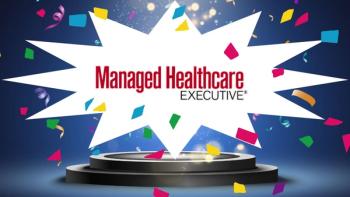
CVS Caremark and Cardinal Health team up to supply generic drugs
CVS Caremark and Cardinal Health are about to become the single biggest supplier of generic drugs in the United States.
CVS Caremark and Cardinal Health are about to become the single biggest supplier of generic drugs in the United States.
The 2 companies have signed an agreement that commits them to a “50/50 joint venture” that may dominate the US market, which according to their official press announcement is the largest market for generic drugs in the world.
No other company fills as many US prescriptions every year as CVS Caremark does; last year, the company said, between mail order and its retail stores, it filled more than a billion. Cardinal Health, which specializes in healthcare services, has built up extensive supply-chain expertise through shipping drugs and medical products “to more than 100,000 provider and pharmacy locations each day,” the statement said.
The new entity is expected to begin sourcing and negotiating generic drug contracts for both companies as soon as July 1, 2014. The initial agreement, which builds upon the close business relationship already existing between the two companies, extends through the next 10 years. To equalize the partnership, Cardinal Health will make a quarterly payment of $25 million to CVS Caremark for the duration of the agreement.
Another press statement announced that already existing pharmaceutical distribution agreements between Cardinal Health and CVS Caremark have been extended for 3 years, through June 2019.
Competitive advantage
“It should be a win for CVS and Cardinal, since their combined buying power should give the new entity a competitive advantage over other PBMs,” said L. William Katz, president, Katz & Associates, Gilbert, Ariz. “I am sure they expect to negotiate deeper discounts on generics and, hopefully, pass some of the savings on to their managed-care customers. This combination may trigger scrutiny by the Department of Justice and the FTC, depending on how the government chooses to defines the market for generic drugs.”
Assuming that part of the expected savings is passed along to hospital customers, this may help reduce hospital prescription costs and profits, since, according to Katz, for many payers “The cost of drugs is included in the reimbursement rate. In particular, payers reimbursing on a DRG or bundled basis include the cost of pharmaceuticals in the DRG and bundled rate. If the DRG rate remains the same, hospitals will see the cost of treatment reduced, at least in the short run, until the payers take the new cost of pharmaceuticals into account in setting payments.”
Managed care decision-makers are likely to gravitate to the lower-cost providers and take any reduction in the cost of generic drugs into account when negotiating provider contracts and in choosing a PBM for their managed drug programs, said Katz. “Pharmacists may be able to purchase pharmaceuticals at lower cost,” he said. “Whether these savings will be passed along to patients will depend on how pharmacists set their compensation for prescription dispensing.”
Supply-chain partnerships
Last year, Walgreen Co., UK-based Alliance Boots GmbH, a leading international pharmacy-led health and beauty group, and Amerisource Bergen, another major drug distributor, established their own strategic partnership.
“The CVS and Cardinal generic-sourcing entity does not appear to have a focus similar to that of the Walgreens entity,” Katz said. “Walgreens appears to be focused on lifestyle products, while the CVS/Cardinal entity appears to be focused on the wholesale pharmaceutical/PBM business. The CVS/Cardinal entity takes advantage of synergies in generic-drug purchasing and sales, while the Walgreens combination seems to focus on retail drugstore markets.”
Newsletter
Get the latest industry news, event updates, and more from Managed healthcare Executive.


